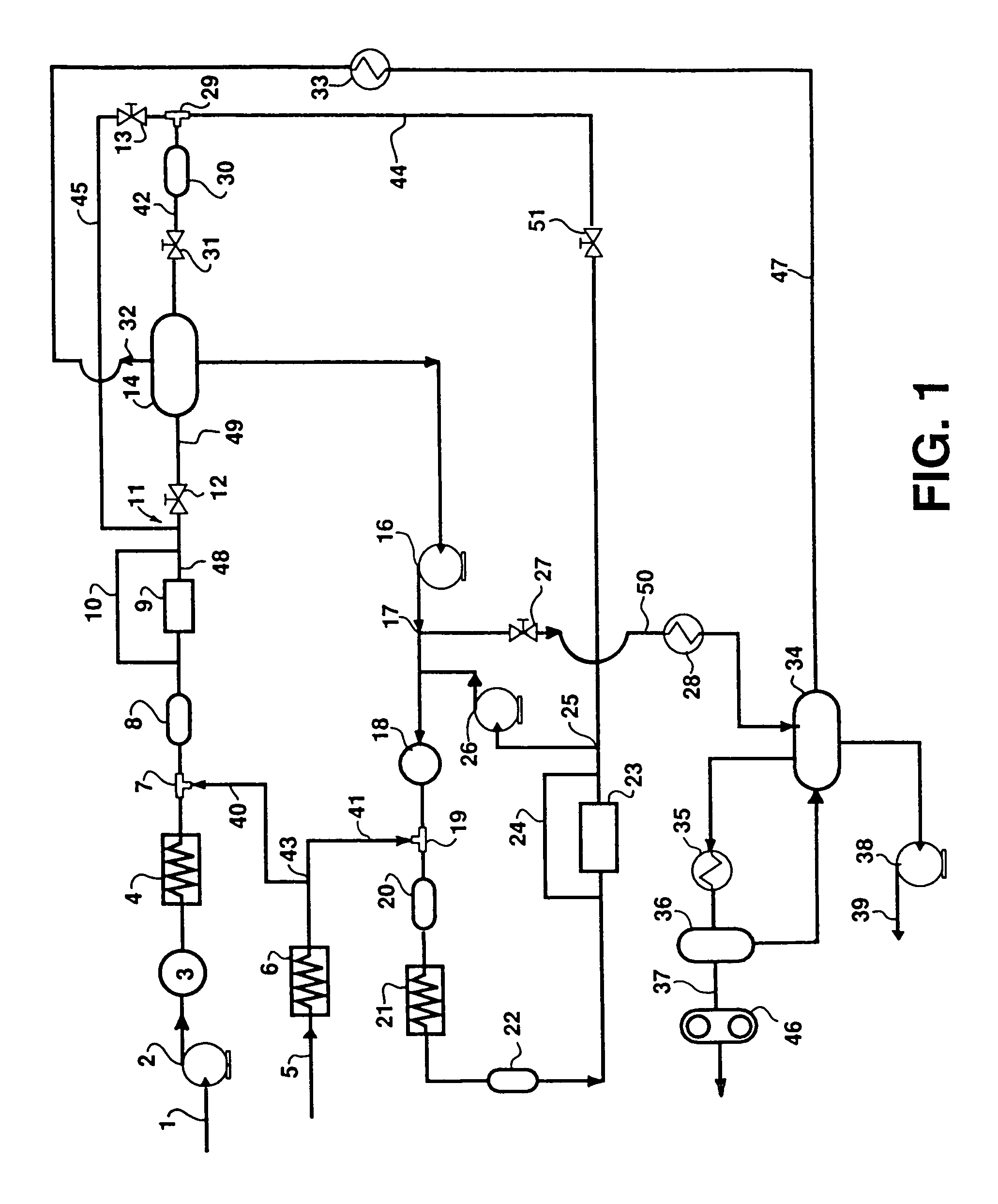Process for treating crude oil using hydrogen in a special unit
a technology of hydrogen and special units, applied in hydrotreatment processes, hydrocarbon oil cracking, petroleum industry, etc., can solve the problems of reducing the profit margin per barrel of oil produced, reducing the profit margin per barrel of oil, and current treatment and upgrading techniques are only economically viable in large plant capacities. , to achieve the effect of reducing capital equipment costs
- Summary
- Abstract
- Description
- Claims
- Application Information
AI Technical Summary
Benefits of technology
Problems solved by technology
Method used
Image
Examples
Embodiment Construction
[0017]The markets available to use this invention may for example be regions that produce heavy oil. These include markets in Canada, Venezuela, United States, Africa, and other international production regions. One of the largest target market includes the field in Venezuela. The heavy oil reserves of the Oil Belt of Venezuela have been estimated to be 1.1 trillion barrels. An upgrading technology represents a tremendous market advantage in the heavy oil production regions of the world. The process of this invention is also capable of treating the crude oil stream to remove sulfur based compounds, nitrogen based compounds and metallic compounds. This invention also represents a significant improvement in conventional refining practices. Refineries could easily employ this technology to improve hydroprocessing techniques.
[0018]The features of this invention provide improved benefits in the upgrader process and higher quality product through destructive and non-destructive hydrogenat...
PUM
| Property | Measurement | Unit |
|---|---|---|
| temperature | aaaaa | aaaaa |
| pressures | aaaaa | aaaaa |
| pressure | aaaaa | aaaaa |
Abstract
Description
Claims
Application Information
 Login to View More
Login to View More - R&D
- Intellectual Property
- Life Sciences
- Materials
- Tech Scout
- Unparalleled Data Quality
- Higher Quality Content
- 60% Fewer Hallucinations
Browse by: Latest US Patents, China's latest patents, Technical Efficacy Thesaurus, Application Domain, Technology Topic, Popular Technical Reports.
© 2025 PatSnap. All rights reserved.Legal|Privacy policy|Modern Slavery Act Transparency Statement|Sitemap|About US| Contact US: help@patsnap.com

